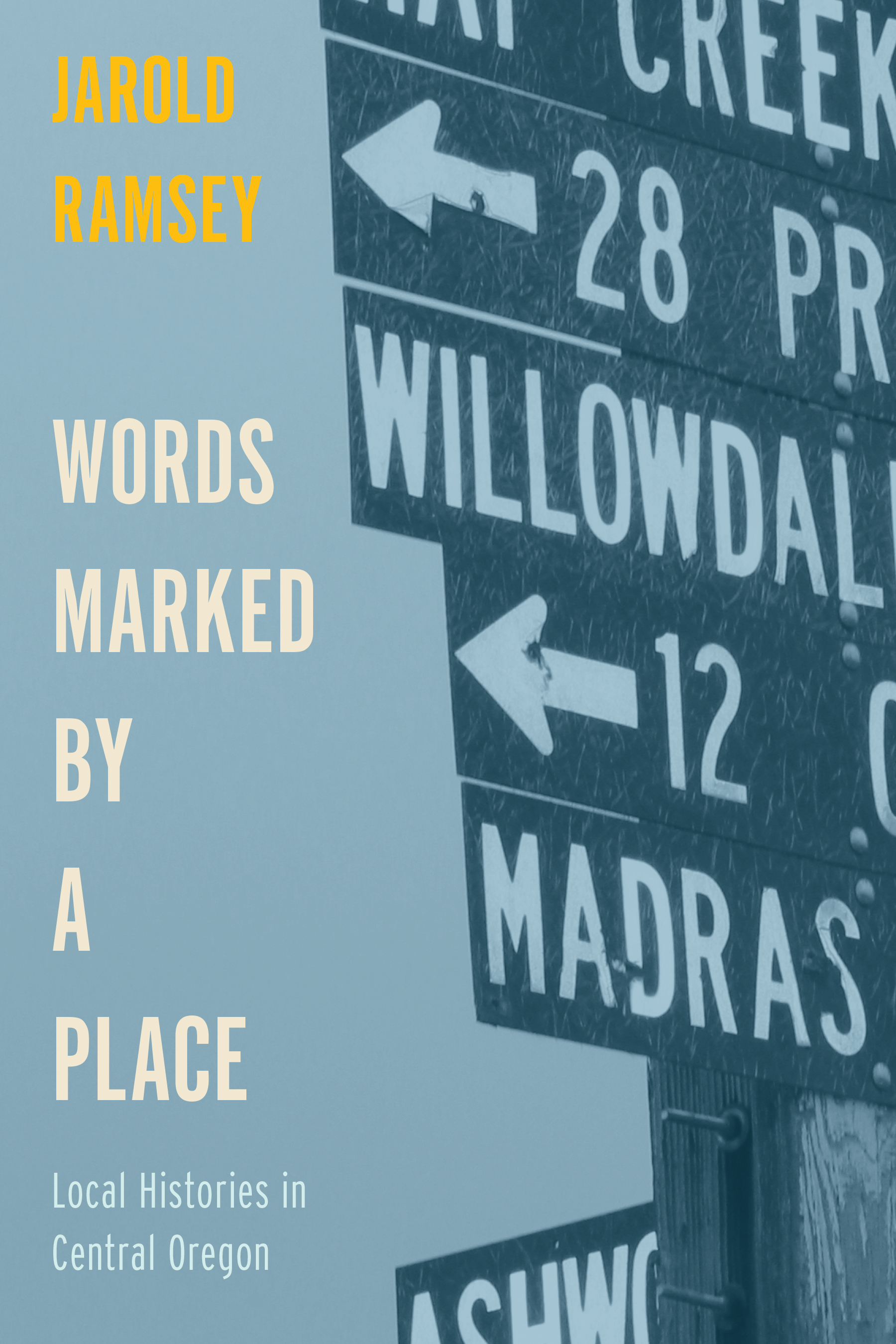 In his new book, Words Marked by Place: Local Histories in Central Oregon, Jarold Ramsey interrogates what “local history” is and how it is related to mainstream academic history. Through both theory and example, he presents a chronological collection of key episodes as well as the colorful but little-known events in central Oregon history, from nineteenth-century exploration to the railroading and homesteading era to the era of community-building and development that followed. Ramsey briefly discusses his philosophy of looking at history through a “zoom lens” below.
In his new book, Words Marked by Place: Local Histories in Central Oregon, Jarold Ramsey interrogates what “local history” is and how it is related to mainstream academic history. Through both theory and example, he presents a chronological collection of key episodes as well as the colorful but little-known events in central Oregon history, from nineteenth-century exploration to the railroading and homesteading era to the era of community-building and development that followed. Ramsey briefly discusses his philosophy of looking at history through a “zoom lens” below.
_________________
On March 24, 1944, a P-39Q "Airacobra" fighter plane crashed during a training flight, north of Madras, Oregon, killing its young pilot, 2nd Lt. Robert Cranston of Green Bay, Wisconsin. As a first grader coming home that day from our nearby country school, I was an eyewitness to the crash.
After the immediate horror of it subsided, I kept wondering, for years, who the poor pilot was, where he came from, and what had gone wrong with his flight that afternoon. When, over sixty years later, I finally did discover his identity and at least some details of the accident, I felt compelled to write out Cranston’s story as fully as I could for the record—and in the course of that work I decided that the essay would be part of a new book on Central Oregon history, a sort of follow-on to my New Era: Reflections on the Human and Natural History of Central Oregon (OSU Press, 2003).
But with a difference: along with further interpretive reflections on our region’s rich but largely unstudied history, I wanted to ponder self consciously the subject of local history itself. How does working with the history of particular places and homelands relate to researching and writing about history on a national or global scale? Involvement in local history—I had become very engaged in the doings of our Jefferson County Historical Society since moving home to Madras in 2000—occupies a lot of good people, I discovered, energetically doing a wide variety of worthwhile things in the name of history—not just scholarship and writing, but also museum work, archiving, re-enacting notable local events, organizing centennial programs, and so on. My perception that such work can be in its own way historically valuable, stimulating, and fun, and that most academic historians ignore it, or view it with disdain, whetted my intention to look sideways, theoretically, at what my friends and I were trying to do to preserve and celebrate our home country’s legacy.
Part of the challenge in trying to find meaning in what we call history, whether on the global, national, or local scale, is keeping in view both the forest and the individual trees; that is, maintaining as much as possible a sort of dialectical double focus on the material, using what I call a "zoom lens." In the case of the Airacobra crash, determining after more than half a century the details of Cranston’s death was certainly a challenge in itself. But to tell anything like the whole story, I came to realize, was going to require that I "zoom" my focus beyond just Madras Air Field in 1944 (and my childhood memories) out to what was happening then nationally—how the Army Air Corps was operating, how they were training their pilots, how small ancillary airfields like the one in Madras were supposed to function as parts of a larger military enterprise, and so on.
And conversely I persuaded myself that the story of what happened to Robert Cranston (and his fiancée in California and his family in Wisconsin) might, if I told it properly, add a small measure of concrete meaning and human value to historians’ big-picture efforts to show how the Air Corps operated during World War II. And beyond that, what the American war effort was all about. There is, I came to believe, some important truth-value in the truism "All history is local"; and if so, the proposition can cut both ways.
One other feature of Words Marked by a Place came out of this theoretical interest in my historical material. That is, I resolved to show what can be done with it in other than conventional, academic ways. So along with scholarly essays on early Central Oregon exploration, railroad-building, homesteading, the political origins of Jefferson County, and the like, I’ve offered (I hope usefully) an example of localized historical fiction, some dramatic renditions of local events in the form of skits (written for performance at various centennials in Madras and the county), and an attempt to gather and historically interpret distinctive localisms I grew up with. These are colorful words and expressions that may point to the evolution over more than a century of a Central Oregon dialect—in a phrase from William Carlos Williams that has become my book’s title, "words marked by a place."
I’d like to hope that the book itself, in its verbal dimensions, is expressively "marked" by the unique region whose histories it celebrates.
